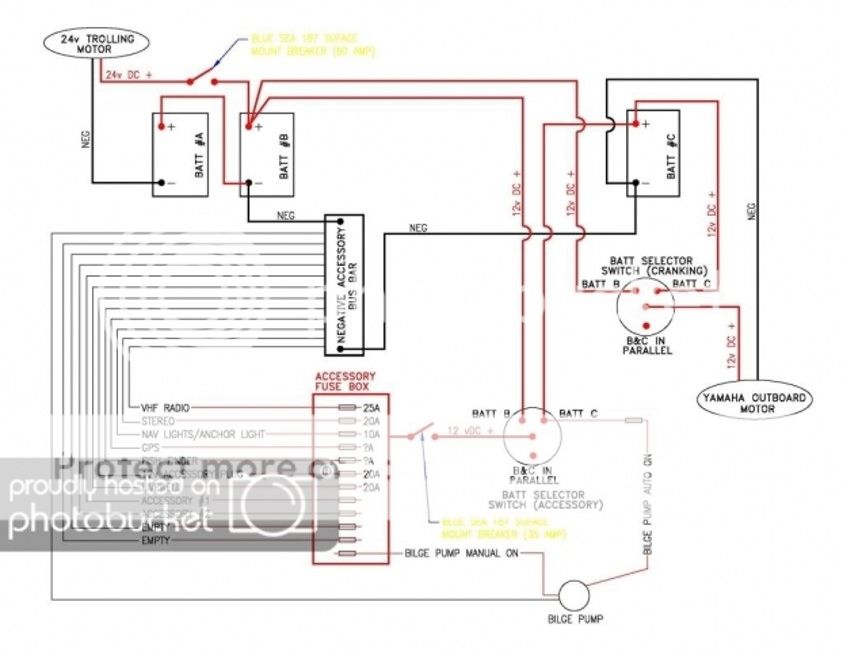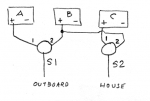I'm totally rewiring a boat. Here's what I want, but I can't draw/design it:
3 batteries in two "banks". Bank1 - starting. One battery. Bank2 - house. Two batteries.
Motor on Bank1 by default but able to pull from either or both in Bank2 if needed.
Accessories (everything else) on Bank2. 12v with the exception of a 24v trolling motor. 12v accessories should be able to pull from either battery in Bank2 and from the single in Bank1 if needed.
Trolling motor always pulls from Bank2. Never from Bank1.
I want the motor to charge at least the starting battery while under power. I would prefer it to charge all three.
The less i have to do manually, the better the world will be.
I did look through the stickies, but don't think i saw exactly what I'm describing. if someone could do a basic pencil drawing and post it, that would be a huge help.
Kevin
3 batteries in two "banks". Bank1 - starting. One battery. Bank2 - house. Two batteries.
Motor on Bank1 by default but able to pull from either or both in Bank2 if needed.
Accessories (everything else) on Bank2. 12v with the exception of a 24v trolling motor. 12v accessories should be able to pull from either battery in Bank2 and from the single in Bank1 if needed.
Trolling motor always pulls from Bank2. Never from Bank1.
I want the motor to charge at least the starting battery while under power. I would prefer it to charge all three.
The less i have to do manually, the better the world will be.
I did look through the stickies, but don't think i saw exactly what I'm describing. if someone could do a basic pencil drawing and post it, that would be a huge help.
Kevin
Last edited:






















